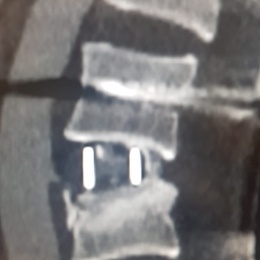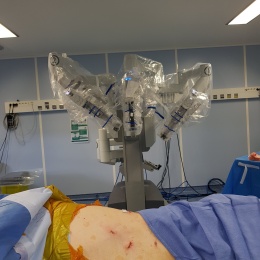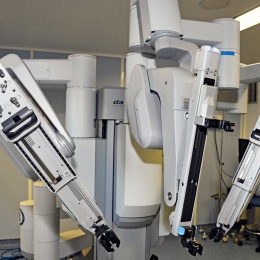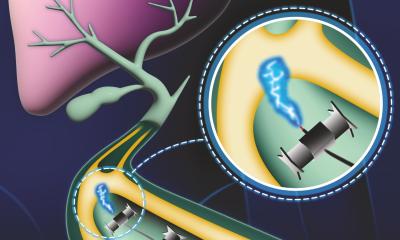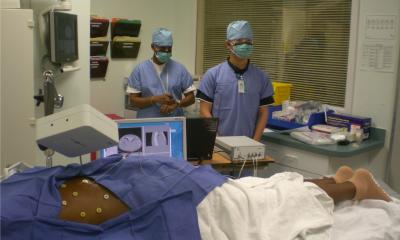News • Surgical breakthrough in France
Robot enables lumbar spine repair
Is it possible to repair the rachis without having to open the abdomen or the back? A team of French surgeons has done just that. Thanks to minimally invasive robotic surgery, exposing the patient to risky spine interventions may soon be avoidable, a leading surgeon explained.
Report: Mélisande Rouger
Neurosurgeons and vascular surgeons in France have, for the first time, successfully repaired the lumbar spine with the help of a da Vinci robot. This pioneering intervention results from a cooperation between Nancy University Hospital and Timone University Hospital in Marseille. The patient, a 36-year-old man with a complex vertebrae fracture caused by lumbar trauma, received an iliac bone fragment implant and prosthesis and is recovering quickly.
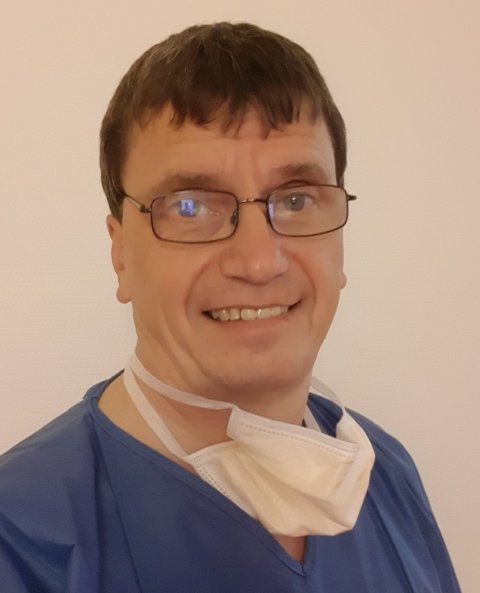
This minimally invasive robotic technique is a game changer in spine trauma surgery, which traditionally requires opening the patient quite extensively either in the abdomen or the back, to access the lesion and secure the surrounding vertebrae, aorta and blood vessels. With this new type of surgery, surgeons can now repair the fractured or damaged vertebrae by doing an incision of just a few millimetres, Serguei Malikov, professor of vascular surgery at Nancy University Hospital, explained.
‘We did the same radical and final gesture as in classical surgery, only with a simple puncture of the abdominal wall. We did not have to open the wall to repair the rachis,’ he said. ‘We just placed the robot’s arms inside the cavity, without damaging the abdominal wall or moving the organs.’
Like seeing spine and nerves under a microscope
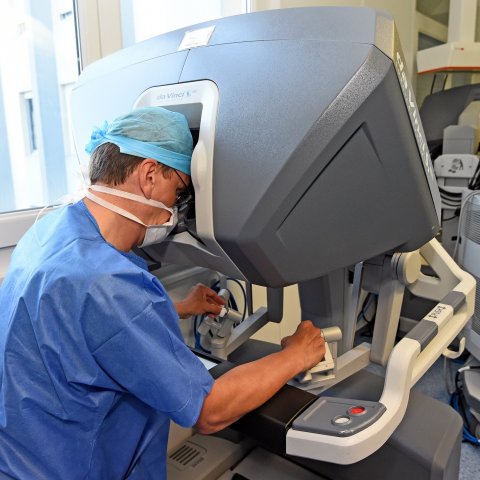
Working with the robot tremendously improves surgical vision during the intervention, thanks to a powerful camera, excellent resolution and the possibility to zoom in. ‘It’s like seeing the spine and the nerves, the part that wraps up the bone marrow, through a microscope,’ he said, adding, ‘with much more detail than traditional surgery,’
Robotic surgery is fast and expands the surgeon’s field of action without touching surrounding tissues. ‘The robot improves our precision and movement amplitude, allowing us to repair areas that used to be complicated to access,’ he said.
With the robot, the minimally invasive approach is as radical as surgery, but without any risks. The intervention time is shorter and the patient does not need to be opened and closed, prompting better surgical outcome and earlier recovery.
Cooperation is key
Experts foresee a wide variety of applications for repair of rachis lesions caused by trauma, infection, degeneration or cancer. Robotic surgery of the spine is bubbling. Other patients have been treated with the technique in Nancy and Marseille. Their evaluation will help determine how much the technique can be expanded to wider surgical practice. As for the lumbar spine in particular, Malikov said he found only two publications – in the USA but none in Europe – on similar interventions, but at other rachis levels.
In France, vascular surgery has been a well-established subspecialty (founded 1984) much earlier than in other European countries. This seniority, combined with the possibilities offered by technology, is promising, and boosts collaboration with other subspecialties, especially neurosurgery, Malikov believes. ‘We are very proud of our breakthrough. We’ve been working on the topic for the past five years, first in animals, then cadavers. It’s the result of a close cooperation between two hospitals, and two subspecialties: neurosurgery and vascular surgery. The key in rachis reconstruction is vessels and aorta control. It’s the access, not the disease, that demands vascular surgeons to step in.’
Experimental works have been carried out at Nancy Surgery School, within the Lorraine Virtual Hospital, a reference centre in Europe for training and research in medico-surgical innovation (notably telesurgery, robotic, coelioscopic, endoscopic and endoluminal surgery) and evaluation of therapeutic processes validation based on surgical expertise.
Profile:
Serguei Malikov studied medicine at the University of St Petersburg, Russia. He carried out his research in experimental surgery in Marseille and currently heads the Vascular Surgery Department in Nancy University Hospital, France.
31.10.2019




